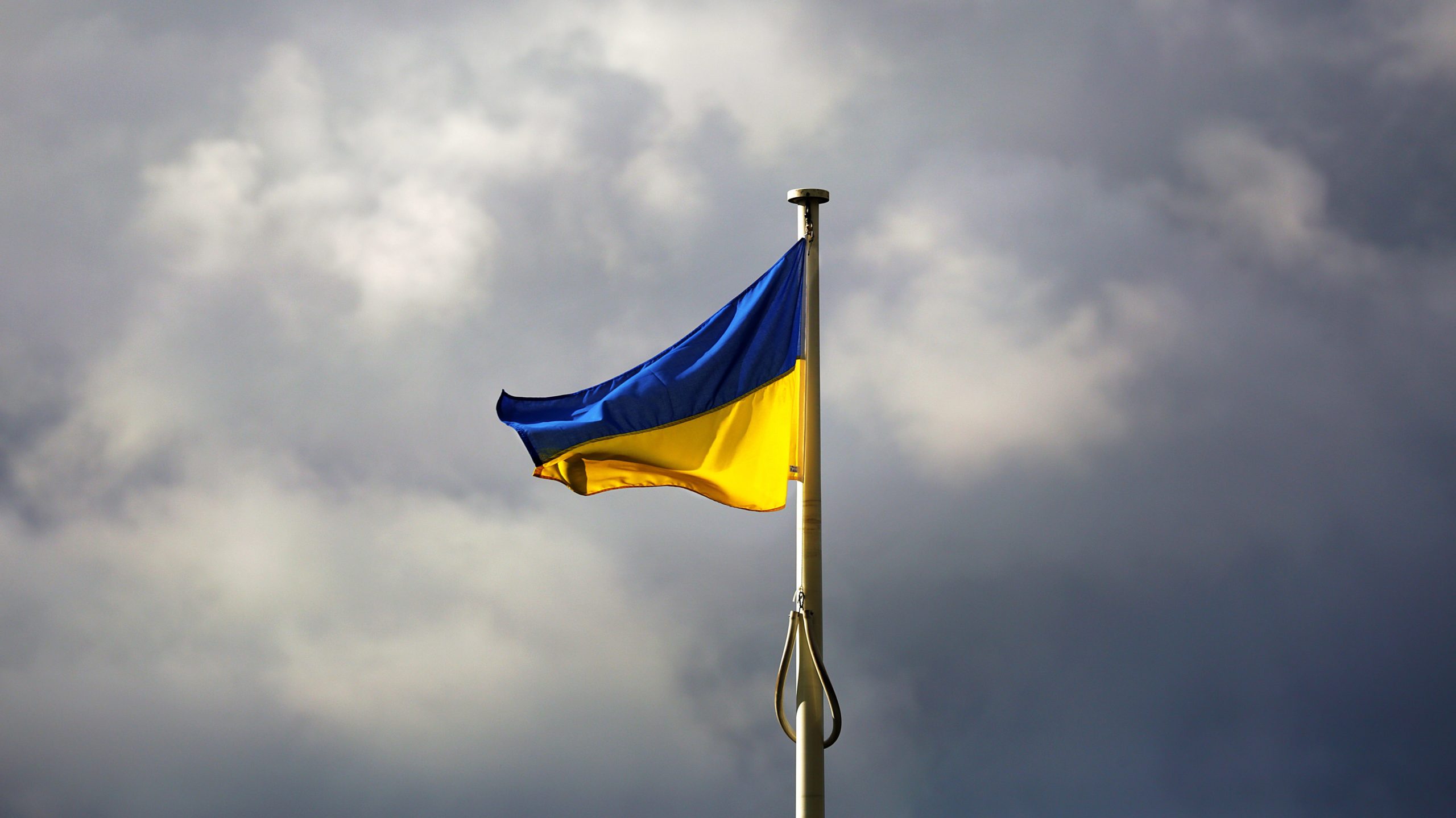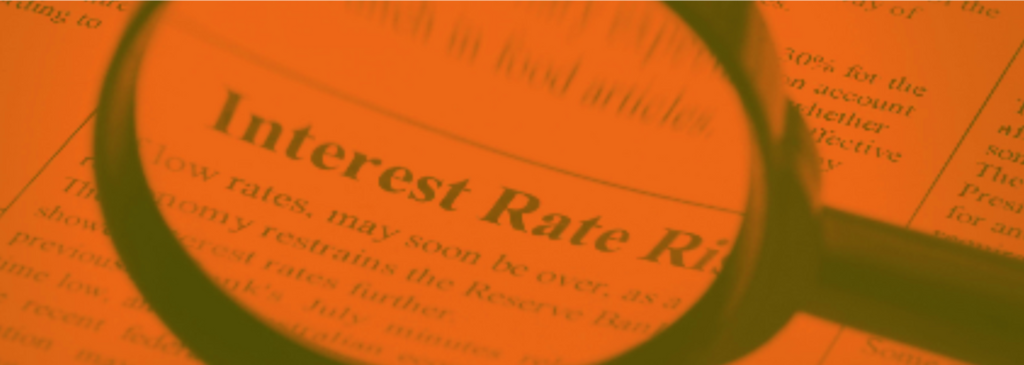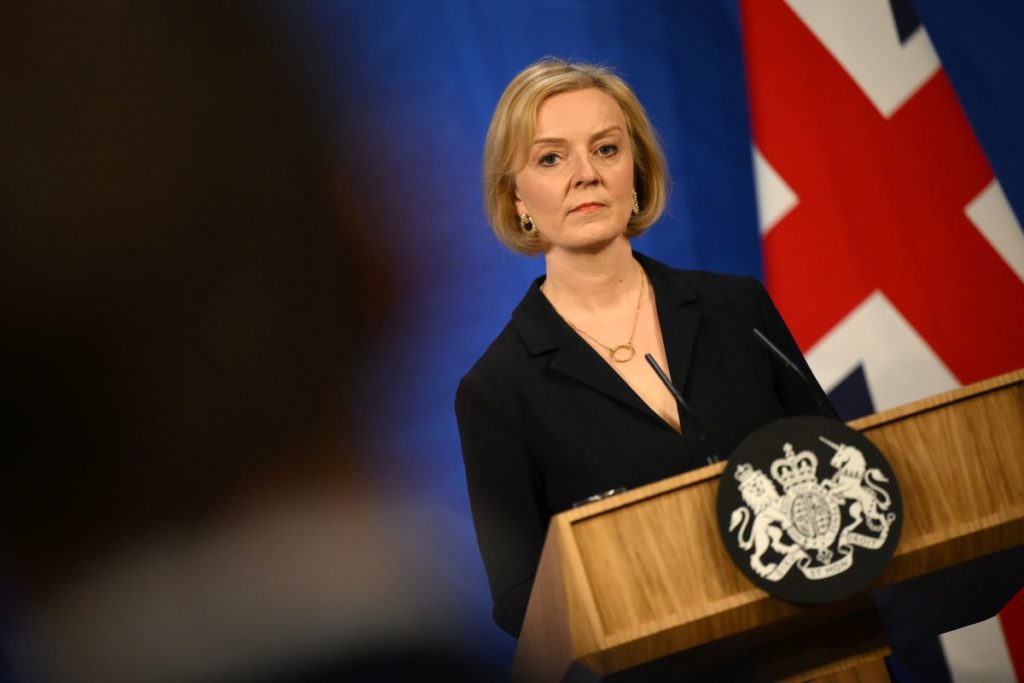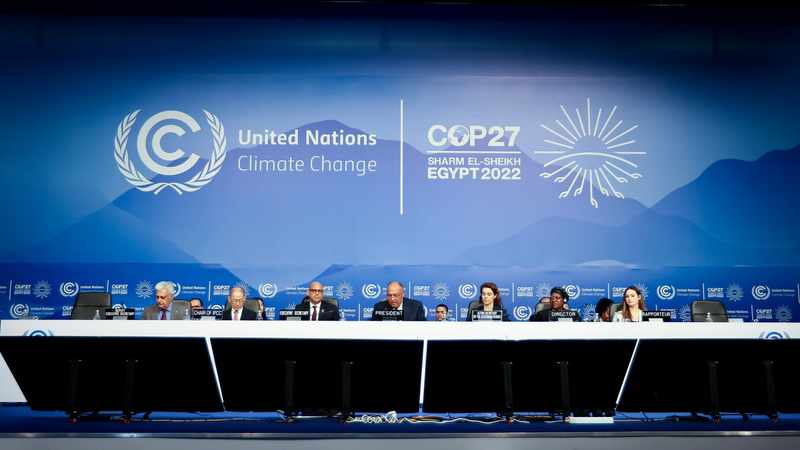Six global tsunamis of change
- First Strike: World War 3 or Cold War 2?
- Taking a hike: Interest rates march towards the end of cheap money
- Trussed up: (Not-so) Great Britain’s uncertain future
- COP27: The non-event that will change the world
- Twitter gets a ‘Musk-over’: Will Elon save social media, or kill it off completely?
- The Crypto Winter: Will it become a Permafrost?
We also looked at 7 signals from 2022 that could change the world and summarised our top 4 lessons from 2022.
First Strike: World War 3 or Cold War 2?

The Russia Ukraine war is undeniably a notable event of 2022 that will shape the future. Beyond the heart-breaking human tragedy, the act echoes the cold war and has far-reaching implications yet to be realised.
Geopolitically, very few nations have chosen not to participate in the economic war on Russia, with a separation emerging between North and South and developed and developing nations. This demonstrates a significant shift from historical East-West lines and consequences for neutral positions may yet be felt.
Still reeling from the impact of two years of pandemic-related lockdowns, Europe is host to its largest war in almost 80 years, with the price of commodities, including oil, wheat, coal, iron, steel, nickel, aluminium, platinum, palladium, and neon increasing. The challenges resulting from the conflict are further impacting globalised economies, resulting in significant shifts in logistics, and the reshaping of entire sectors.
According to the Organization for Economic Co-operation and Development (OECD), the war in Ukraine would cost the global economy a ‘hefty price’ in the form of slower growth, higher inflation, and possibly permanent harm to supply networks, presenting new global considerations, as well as opportunities.
The end of globalisation? While the end of globalisation is unlikely, how it manifests going forward will be different. The conflict has strained relations between countries and companies. As Russia wages a morally corrupt war on Ukraine, NATO and other countries and governments are waging economic war on Russia, imposing a range of sanctions. Capital markets, financial institutions, and companies have gone further, terminating long-standing business and investment relationships. All of which coincides with a growing nationalist sentiment, further exacerbating polarisation in society.
Actions of the private sector have demonstrated the power of capital markets, with capacity to either support, or quickly deny capital based on country and corporate values.
Will we have enough food? Much of the damage has already been done, setting the stage for enduring global food crises in the coming years. Ukraine and Russia are collectively known as ‘the world’s breadbasket’, and the conflict is causing damage to equipment, soil, and storage facilities, disrupting production capabilities well into the future. Russia is also one of the world’s top fertiliser exporters, with soaring prices compromising many countries’ agricultural production. Further escalation of the war could result in even greater regional production decline. The fallout from the conflict is compounded by challenges of a low 2020 harvest together with catastrophic climate events. The resultant worldwide food shortages could start new conflicts and civil unrest across the globe, further exacerbating the problem.
Established sectors, such as AgTech, together with nascent industries, such as controlled environment agriculture and cellular agriculture, are well-suited to play a part in addressing these challenges. Brazil, as an ‘unaffected’ nation, will likely benefit from increased demand for its grain exports. Brazil is one of the few countries that has a surplus of grains that could fill the gap created by production shortages from Ukraine and Russia. Brazil can also switch from ethanol to food production if demand dictates.
What about the energy transition? Energy prices continue to surge, both in the EU and globally, as Russia curtails fossil fuel exports aimed at eroding EU’s support of Ukraine. Over previous decades, Europe has come to depend heavily on Russian energy, importing 36% of its gas requirement from Russia in 2021. In response, many countries are seeking new and alternative energy sources. The US is focusing on increasing oil and gas supply, while Europe and Asia will increase coal consumption over the next year, collectively slowing progress toward net zero. The energy crisis presents significant opportunities for established companies focusing on renewables, as well as the emerging playing fields of hydrogen and fusion energy.
While we appreciate that many opportunities have been created through the global fallout of Russian aggression, the collective impact has harshly contributed to an already strained economic climate.
Taking a hike: Interest rates march towards the end of cheap money

The years leading up to 2022 were characterized by readily available low-risk capital for investment, driven by low interest rates and fuelled by pandemic-related funding support. This charged stock markets and company valuations to record highs with technology stocks – thought to have superior, more resilient business models – leading the surge. In reality, this ‘new normal’ looks a lot like life before 2020, but with a more troubled geopolitical and supply chain landscape.
The wave of post-pandemic inflation increases has scoured the globe, carrying geopolitical uncertainty and fragmented supply chains in its undercurrent. With basic consumer goods prices shooting up and US core inflation at its highest since 1982, alarm bells sounded at central banks, triggering a series of steep US interest rate hikes in quick succession. The UK, EU, and others soon followed suit, marking the end of cheap capital in developed economies – at least for now. Investors are reacting accordingly, rebalancing portfolios to safeguard capital in lower risk vehicles, staying away from higher risk equity markets.
Did interest rate hikes go too far, too soon? The job openings slowdown in the US from Q1 to Q3 of 2022 signals that the rate hikes are effecting change. But the full lag effect on consumer inflation and GDP is yet to be felt on the ground. One thing is certain – the US Federal Reserve would much rather embrace a recession in 2023 than entrenched consumer inflation, so be prepared for a slowdown in economic activity and have your growth plans polished and stamped for when debt is cheaper.
How will institutional investors react? Despite a looming recession, institutional investors are waiting at the gates, sniffing out any changes in global sentiment, interest rate hike retreats and reversals, US job figures and the like to repurpose capital into still-promising industries. A simple misinterpretation of US Federal Reserve Chair, Jerome Powell’s sentiment towards retreating on rate hikes resulted in tech stocks increasing by ~10% in October, only to be corrected when it was clear the rate hike was not yet over. Business goes on (with readjusted cost of debt), but your tactical and strategic playbook is more important than ever to emerge as a winner.
Is there more noise in a globalised economy? Interest rate hikes and retreats are standard operating procedure for all countries looking to govern monetary policy. However, what has become clear this time round is that increased globalisation has created an enormous hill for central banks to climb when making interest rate adjustments. Expect good decisions but plan for some bad ones too.
Trussed up: (Not-so) Great Britain’s uncertain future

After years of Brexit bungling, Theresa May’s mediocre tenure, and BoJo’s bluster, followed by the pandemic panic and coronavirus confusion, Britain found itself in the midst of another crisis – the Russian invasion of Ukraine. Johnson was quick to support the ‘right’ side, hoping it would distract from his other problems and increase his popularity. Alas his duplicity proved too great, and he was ejected by his fellow conservatives.
Liz Truss had barely stepped into his shoes – facing the challenges of double-digit inflation, a looming recession, labour unrest, and deteriorating public finances – when Queen Elizabeth II passed on, putting the nation in mourning for weeks. Prince Charles immediately became King, but he lacks the commanding presence his mother had cultivated over seven decades.
With gas and oil prices spiking off the back of the Ukrainian war, Truss immediately announced a freeze on energy rates for millions of households, which made the gilts traders nervous. How would she fund a GBP 100 billion package with a weak pound? But Truss is a free-market libertarian and was determined to take radical steps to stimulate growth and boost the economy.
Brandishing her fiscal broadsword like Boadicea, Truss sent her Chancellor in to deliver a mini budget that would set things alight. With the biggest tax cuts since 1972 and a vast expansion of borrowing, it was at first welcomed by the Tories. But the market reaction was swift and brutal: a run on Sterling, the bond market in freefall, and spooked foreign investors.
The pound collapsed to its lowest-ever level against the dollar, gilt prices plummeted, and mortgage rates shot up. The Bank of England intervened to save UK pension funds, but the damage had been done. Britain’s reputation for sound economic management – already severely compromised by Brexit – had now been permanently trashed.
Within weeks, both Kwasi Kwarteng (who?) and Truss herself had been replaced, and the new team lost no time in reversing all her policies and cancelling the planned cuts. It was the most astonishing U-turn in British politics, and effectively ditched Trussonomics for good.
Can they turn it around? Though markets have calmed somewhat since, and the pound has clawed back some ground against a weaker dollar, economic prospects for the UK are bleak. With a looming recession, inflation has hit its highest point in 45 years. Paris has already eclipsed London to become Europe’s most valuable stock market. All eyes are on Jeremy Hunt and Rishi Sunak to see if they can right the listing ship.
But this seemingly transient event in British politics will have repercussions for decades. The meltdown of financial markets was possibly the greatest debacle since the Suez Crisis of 1956, and has tarnished the UK’s reputation forever. On the international stage, compounding the rancour over Brexit, former allies view the British economy as regressing to a developing market. In power politics, confidence and stability are essential, and making Britain ‘Great’ again will be a herculean task.
COP27: The non-event that will change the world

This year, COP27 was hosted in Sharm El-Shaik and, much like the years before, this was an extremely important event for humanity to change its course on climate change.
After 27 years of COP meetings, greenhouse gas concentrations have continued to reach record highs. We are moving towards a global food and energy crisis and the planet is experiencing extreme weather events. Despite our attempts to curb global warming, positive impacts have yet to be seen.
Since the last COP, a war has broken out in the world, forcing many countries to retreat inwards and return to fossil fuels, placing further strain on our planet and moving us further from net zero aspirations.
Are big emitters (predominantly developed nations) accountable for the damages and losses caused to low emitters (predominantly developing nations)? This year’s COP addressed losses and damages for the first time. New research highlights that the big emitters have directly caused a loss of GDP and environmental issues in developing nations. COP27 broke new ground through the announcement of a historic fund to compensate vulnerable nations for losses and damages incurred – although the details are still to be confirmed.
Reality is sinking in – we are unlikely to keep global warming below the 1.5ºC target, as set out in the Paris Agreement. So, is there any point to the Paris agreement? We might be off-track, but nations have still agreed to continue to submit their nationally determined contributions and revise them through the ‘ratchet mechanism’. Why? Because even if we miss the target of 1.5ºC it does not mean we can afford a further 0.5ºC, 1ºC, or 2ºC change. Nations will continue to push change and drive industry towards lower emissions targets because giving up is simply not an option.
What lies ahead for COP28? The private sector stepped up at COP27 with over 100 CEOs signing an open letter to work with governments to support climate change efforts. We can expect other large corporates to follow suit as peer pressure sets in.
Although a bit uneventful, COP27 saw industry participation – a very welcome sight – and an open call to organizations to join the movement. Unfortunately, the cost of delayed action by lawmakers will show up on Earth’s climate balance sheet in future – maybe ‘deferred carbon tax’?
Twitter gets a Musk-over: Will Elon save social media, or kill it off completely?

TIME Magazine’s most influential person of 2021, Elon Musk, is no stranger to being an agent of radical global change. With his latest USD 44 billion acquisition of social media giant, Twitter, he has caused quite a stir. The contentious 6-month buyout saga recently crossed the line and Musk has wasted no time in making controversial and bold decisions. Advertisers have been quick to react to reduced moderation, with many pulling campaigns – not a great outcome for the USD 13 billion debt stack.
With this turmoil ensuing, how will Musk save Twitter? He seems to have a panacea already in the works – X, the ‘everything app’, which will integrate Twitter into this social media / instant-messaging / mobile payments app, to create something akin to China’s WeChat service. With Musk’s reputation for building dynamic, leading-edge businesses, this arguably has the potential to become the most popular global app ever. At surface level, you might expect to be able to make in-app purchases based on Twitter advertising campaigns, but the potential is much greater. The Fintech industry may be in for a treat, having the ability to market key services in banking, insurance and investments to ‘at least 1 billion’ users. Small retailers (and larger ones too) can also piggyback on the app to reach a broader consumer base. The scalability of an all-encompassing app like this holds significant value, attracting a multitude of consumer services through an as-a-service model. The possibilities of a ‘super app’ like this are endless.
This is a bold aspiration that will take work and time to realise, and as a result, Twitter’s current risk is at an all-time high. Should Twitter come to a grinding halt, will there be another ‘Twitter’ to offer shelter to its 290 million (human and bot) user base? Or will this signal a prolonged ramp-down of social media?
The Crypto Winter: Will it become a Permafrost?

Cryptocurrency, and all its potential to be the darling disruptor of the traditional financial industry, seemed to be innovating exponentially. However, tumultuous macro-economic conditions accompanied by a slew of scandals has resulted in a nearly USD 2 trillion dollar reversal of the overall cryptocurrency market. With the future of the crypto industry on the brink, will it be able to continue on the fast track towards disrupting the world’s established monetary systems, or will it die a slow death due to over-regulation?
Since Bitcoin’s creation in 2009, there have been two major crypto winters – periods marked by a significant downtrend in the overall market value. This year, the Fed’s aggressive rate hikes ushered in the next series of cold winds for riskier assets, something ‘inflation-hedged’ Bitcoin failed to withstand, with its value dropping ~70% since November 2021 highs. In the same period, the overall crypto industry has shrunk to ~USD 820 billion from its USD 3 trillion peak last year.
During a time of severe ‘risk-off’ sentiment, the already volatile crypto industry experienced two major scandals; blizzards which now threaten the onset of a crypto ‘ice age’.
Terra Luna set out to disrupt the future of money with their flagship stablecoin project, with TerraUSD (UST), leading the way. A stablecoin is an asset whose value is backed by another. Meaning on paper, USD 1 of terra would be worth USD 1 of another cryptocurrency, Luna, and this ‘peg’ would be algorithmically maintained so that your UST is always worth USD 1. In May, the peg failed, and the value of UST dropped to USD 0.91. Arbitrage traders quickly took advantage of this, panic ensued, and a sell-off led to the USD 60 billion wipe-out of Luna (a crash as big as Lehman Brothers in 2008).
The cascading impact resulted in an estimated USD 300 billion loss across the industry and the bankruptcy of previous crypto leaders, Celsius, Voyager, and Three Arrows Capital.
Is crypto doomed to repeat the mistakes of the traditional financial industry? Despite the pain, Crypto HODLers (Hold on for Dear Life) remain undeterred. Or they did. That was until the darling of the crypto world, FTX, the third largest crypto exchange, and its owner Sam Bankman-Fried had its Enron moment. Or could it be Lehman? Madoff?
Three historic lessons repeated in a matter of weeks.
Rumours of a lack of liquidity, further fuelled by an abandoned take-over bid by rival exchange Binance, caused a rush of withdrawals from the exchange. Over-leveraged and undercapitalised, FTX filed for bankruptcy and Sam Bankman-Fried’s ~USD 30 billion empire was wiped out. The bankruptcy proceedings revealed that FTX’s empire was a house of cards built on gross mismanagement and misuse of customers’ funds.
Among those burned by this ‘pie-in-the-face’ moment are major institutional investors, such as Tiger Global, Sequoia Capital, and Soft Bank. This will lead to some serious questions, at an institutional level, about the failure of proper due diligence. And could signal an end to easy access to capital for crypto entrepreneurs.
Is this the end of crypto? Investors, proponents, and every crypto nerd is likely weary of the cascade of failures over the past year. However, this is unlikely to drive capital completely away from crypto (for now). Decentralised Finance (DeFi) exchanges and lending protocols have continued to work in the background, even though it was the ‘centralised entities’ – more akin to ‘normal’ businesses – that were implicated in the scandal-driven collapses. There is no doubt that the race is on for DeFi to prove it is fit for general use and can create real value.
Will the backlash from regulators stifle future innovation? In Asia alone we are already seeing a divergence in regulation approaches. Tightening of regulations in Singapore, a strong focus on enforcement in Korea, and using tax as a behavioural tool in India. This divergence will likely extend across the globe as some economies seek to attract innovation while others take a stricter, more risk-adverse approach.
Now at the brink of a Permafrost, it will take true innovation to turn the tide. Those brave enough to seek it could be the pioneers of the next summer. Not all heroes wear capes, and we feel the same way about blips on the radar today that could shift the world of tomorrow.
Seven signals from 2022 that could change the world
Game-changing technologies and shifts in the market and society rarely happen overnight. More often, they appear as small glimmers, far off on the horizon – signals from the future – that grow over time into transformative ideas and movements. Let’s take a look at a few of the signals from 2022 we believe could change the world:
- UK researchers exhibited the biggest breakthrough in fusion energy since 1997 by producing 59 megajoules over five seconds (11 MW of power) – doubling the previous record. As the global energy transition takes place, solar and wind energy are leading the pack, with circular economy concerns in the background. Effective and safe nuclear power remains a significant future energy opportunity.
- Harvard and Google showcased the biggest high-res map of the brain to date. Leaps forward in this opaque and complex neuroscience field could significantly increase healthcare accessibility, at scale.
- Tesla revealed and launched its AI robot ‘Optimus’. Met with mixed reception, the AI robot gives the world a glimpse of an early prototype that could execute on dangerous and/or easy repetitive tasks in a workforce near you in the not-too-distant future.
- US regulators have given the go ahead for the first small modular nuclear reactor, setting the scene for cheaper, safer, and more accessible nuclear power.
- Researchers have leapfrogged biological processes to grow food without the sun, through artificial photosynthesis. Alternative photosynthesis technologies sit adjacent to energy-intensive indoor farms as scientists and farmers seek alternative ways to maximise productivity during growth seasons. The hunt for cost-effective photosynthesis engines could prove key in enabling more energy- and cost-effective indoor farming operations.
- IBM unveiled Earth’s largest quantum computer. At 433 qubits, this is a leap from the 127-qubit record breaker produced in 2021. IBM is targeting 4,000 qubits by 2025, a growth rate of 30x in only five years. Following this, accessibility and scalability would serve as a critical enabler to solve for high-resolution, resource-heavy algorithms and operational models.
- NVIDIA announced it is making a digital twin of Earth’s climate, which serves as a clear use case for increasing processing power available in the market. A more accurate, higher resolution understanding of the climate, could unlock massive opportunities for the agriculture sector, financial services (including parametric insurance), international travel, governments, and individuals.
Four lessons from 2022
It’s been a big year, with endless surprises and learnings. We have summarised our top four lessons from 2022:
- Geopolitics: it might be 2022, but not much is off the table. With battle lines drawn and censored news it seems that authoritarianism is on the rise. Expect heightened tensions and an increasingly difficult international trade environment.
- Nature-based economy: we are off-target but we cannot falter. Now more than ever, the private sector has a responsibility to lead from the front in the drive towards decarbonisation.
- Economy: developed economies can still make unforced errors (UK) but blunt tools (interest rate adjustments) are still our best bet. Having seen the Purchasing Price Index (PPI) come down towards end of this year, we can expect the impacts to start reflecting the earnings of companies as we enter the new year. The interest rate debacle will continue to play out as the blunt rate adjustment instrument hammers on.
- Technology: Twitter, crypto, and valuation adjustments have given tech a bad rap, but signals coming over the horizon will blow your mind. See our view of the seven signals in 2022 that could change the world.
How will you respond to the events of 2022? How will your business interpret the signals to ensure its exponential growth into the future? That is what Strategy from the Future™ is all about. If you’d like to find out more about Futureworld’s proprietary Strategy from the Future™ process, reach out to us or visit our website.
- Articles